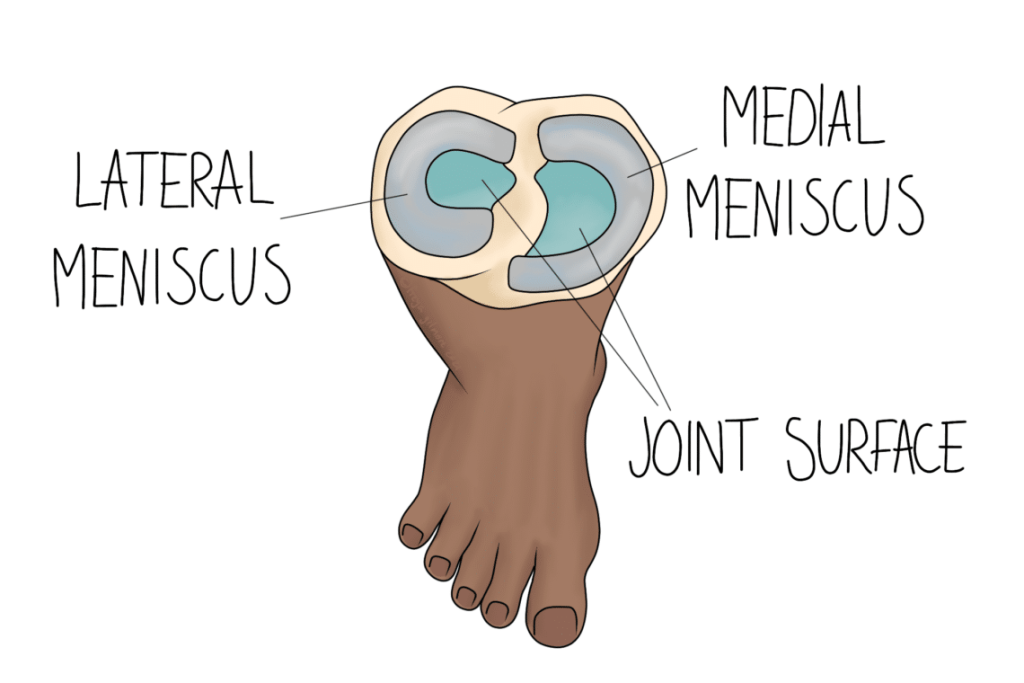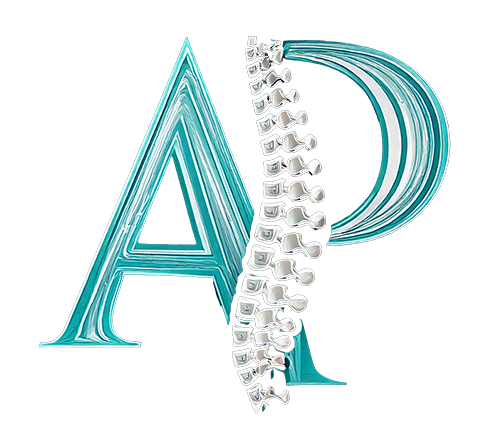Meniscus Tears
The main joint of the knee is the hinge joint between the femur (thigh bone) and tibia (shin bone). On the top of the tibia sit two c-shaped pieces of cartilage, called the menisci (singular: meniscus). Their roles are to provide stability and cushion the joint.

Meniscus injuries commonly happen with a twisting movement while weight bearing. They are relatively common among footballers, as this movement can occur in the planted leg while kicking a ball.
Possible Meniscus Injuries
There are a number of different tears a meniscus can suffer. The type of tear plays a role in determining which symptoms arise. The shape of your tear will likely not change the treatment plan, but the severity may. Straight forward meniscus injuries will probably not be imaged to confirm the exact features of the tear.
Longitudinal and Bucket Handle Meniscus Tears
A tear along the length of the c-shape is called a longitudinal tear. This may be asymptomatic initially, or be indicated only by low level inflammation. One study suggests that around 60% of middle aged people with a meniscus tear do not have symptoms of it. Tears like this where nothing is out of place may be the kind that make up this percentage.
The “bucket handle tear” is so called because the cartilage can flip out, like raising the handle of a bucket. When the cartilage is in the correct position, you may be largely symptom free. When it displaces, there may be unexpected pain or locking on some movements. This unpredictability can make it one of the more annoying injuries to sustain.
Radial and Parrot Beak Meniscus Tears
In contrast to longitudinal tears, radial tears are when the injury cuts into the C shape. If this tear becomes long enough, and begins to tear at an angle, it resembles a beak. By this point, it has become more unstable and is more likely to cause symptoms.
The Unhappy Triad
Alongside a medial meniscus tear, it is not uncommon to also injure two ligaments at the same time. These are the Medial Collateral Ligament (MCL) and Anterior Cruciate Ligament (ACL). This triple injury is known as The Unhappy Triad and is caused by a force hitting the knee from the inside while the leg is planted. Therefore it is often seen in contact sports, but it can happen in other settings. As ligaments are injured, there will be more instability in the knee than a meniscus injury alone.
Management
In the acute phase, your osteopath may want to focus on making you comfortable and reducing swelling. Cartilage is slow to heal because of its poor blood supply, so some swelling is useful to help bring nutrients and immune cells to the area. You may feel like your knee needs to be kept still and rested, but gentle movement is the best thing you can do for the health of the cartilage. It is no coincidence that these injuries often occur alongside osteoarthritis, so managing the health of the whole joint is very important.
The longer term treatment plan will build on the progress made earlier, and focus on rehabilitation. The incidence of meniscal injuries increases as we age, so regular knee treatment may be useful. Keeping the joint healthy and the surrounding tissues strong can only be a good thing.
Your osteopath may have ideas for preventing a recurrence of this injury. Avin has a special interest in sports injuries, so if you’ve sustained a meniscus injury in sport, you’re in good hands. Discussing the nature of the accident itself may highlight things you could change about your sport- such as technique or equipment.
Book in now to get started on your knee pain.

